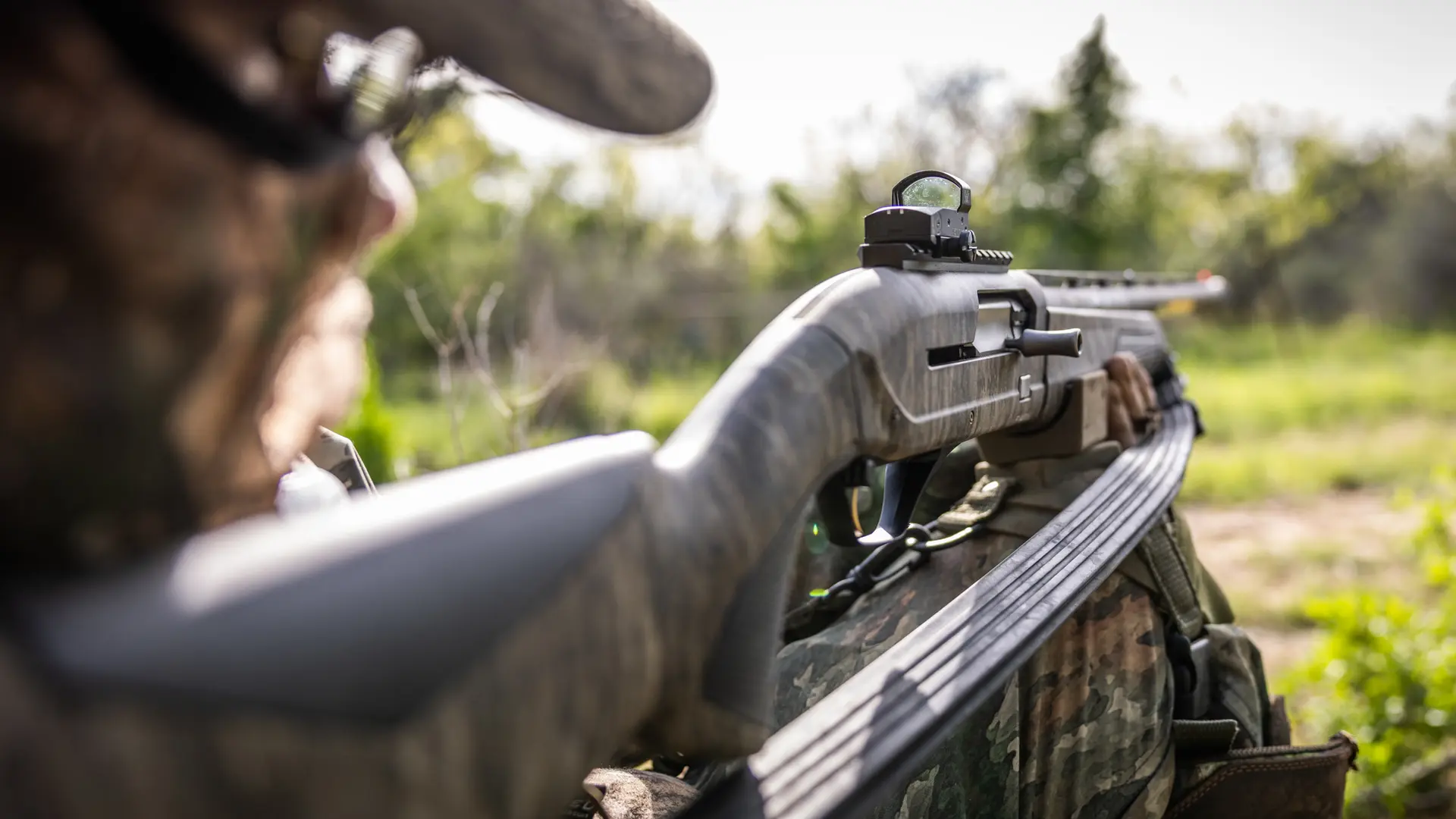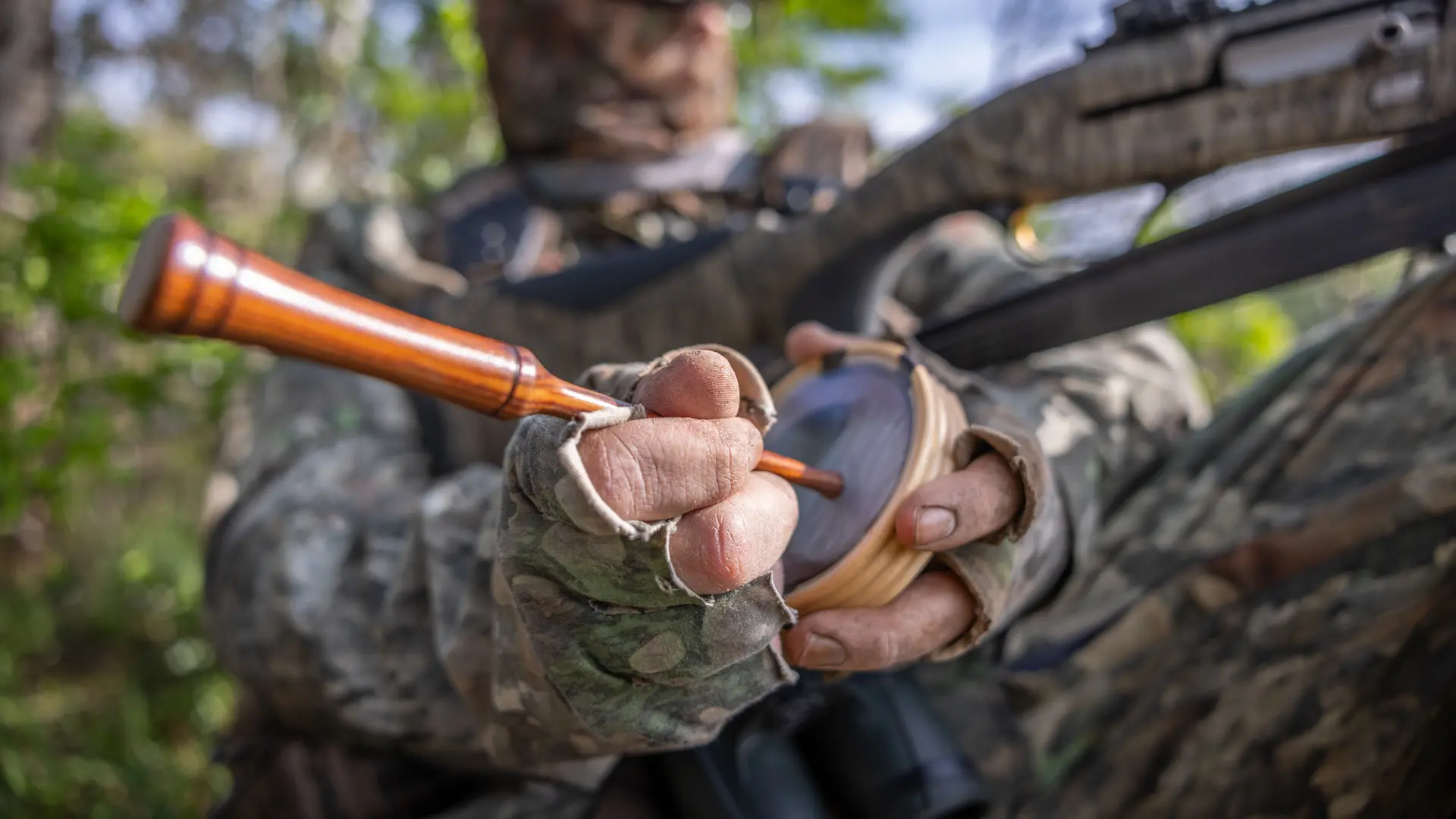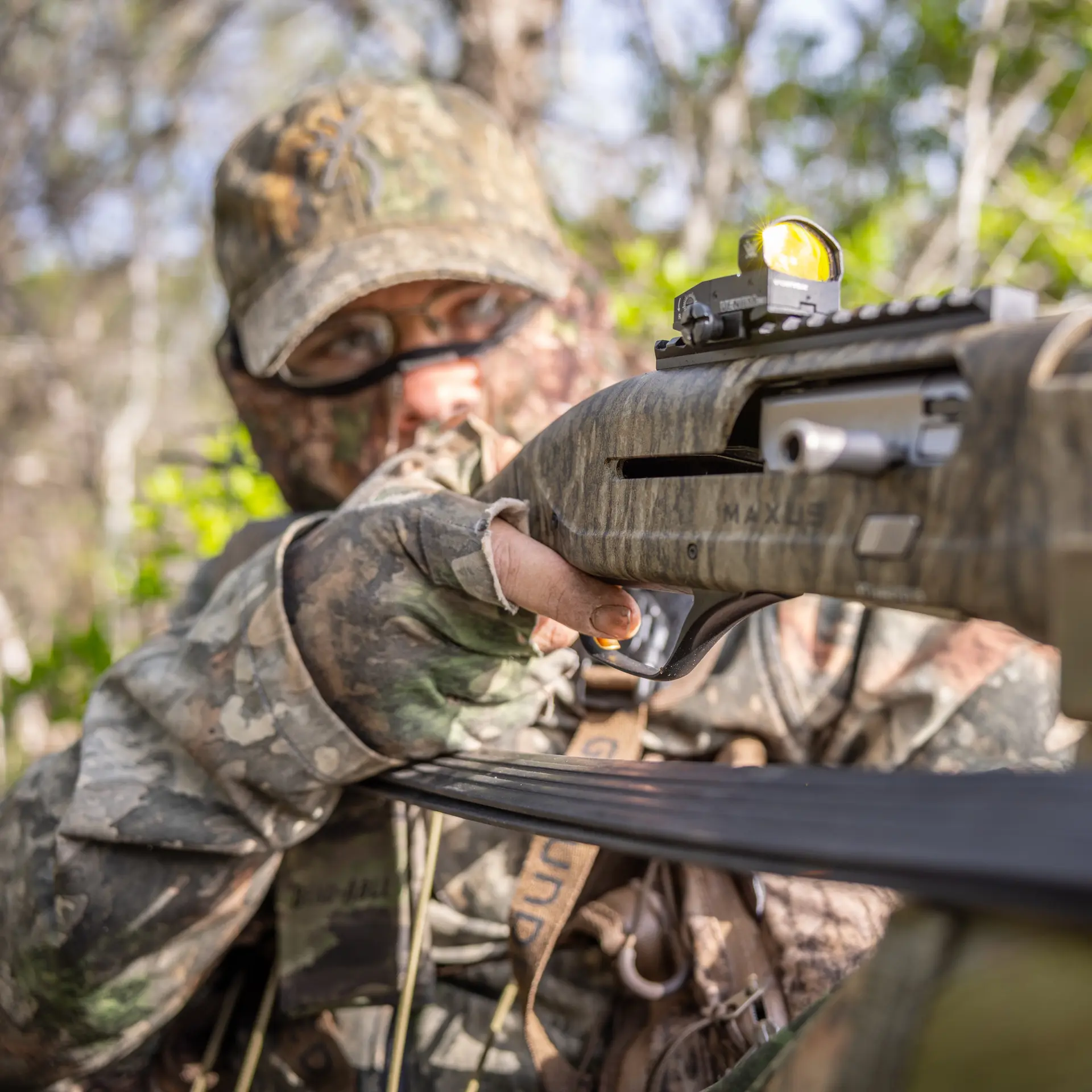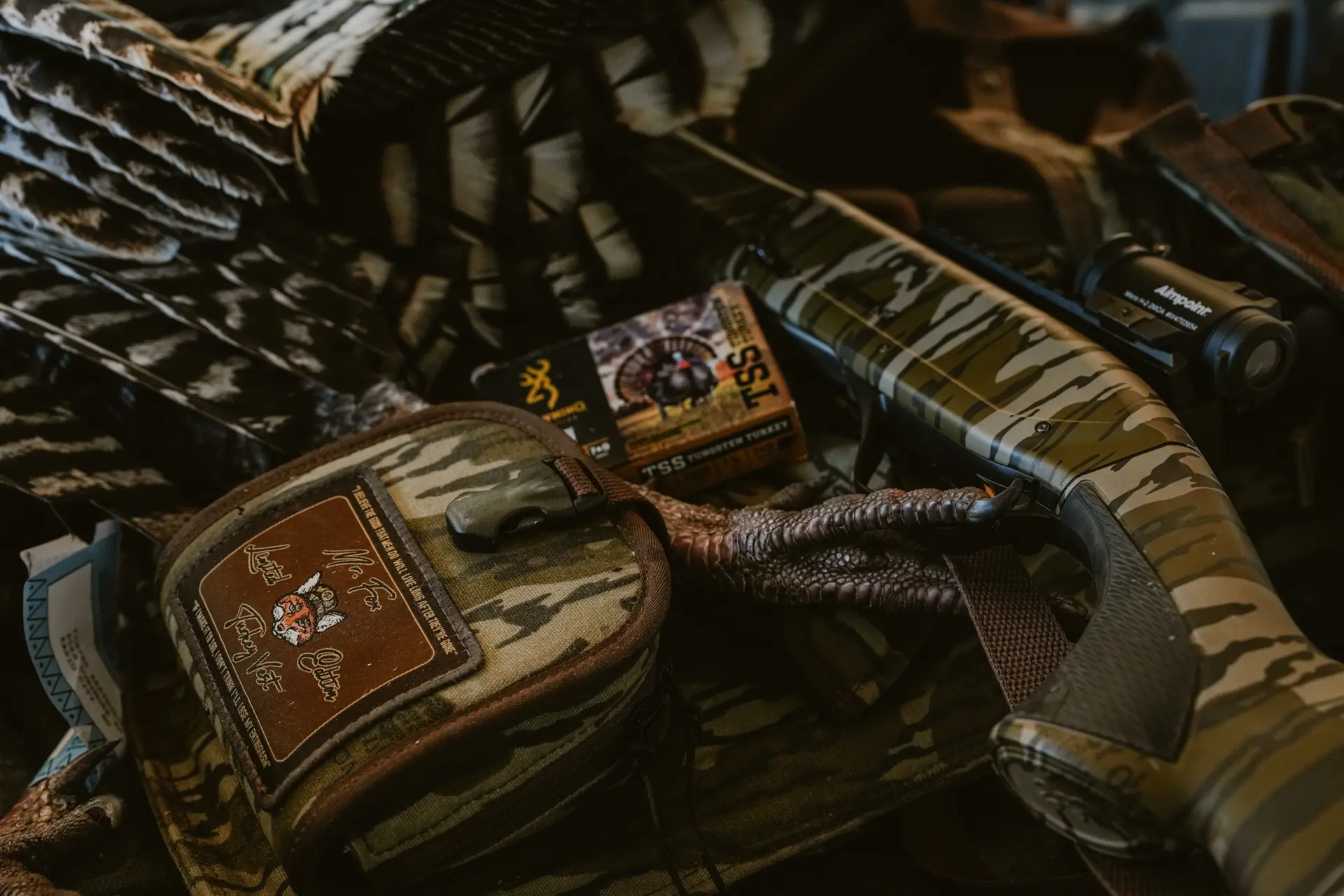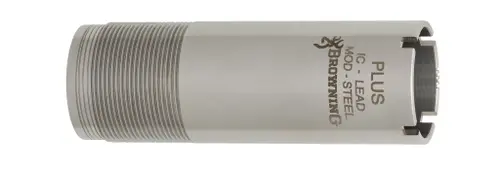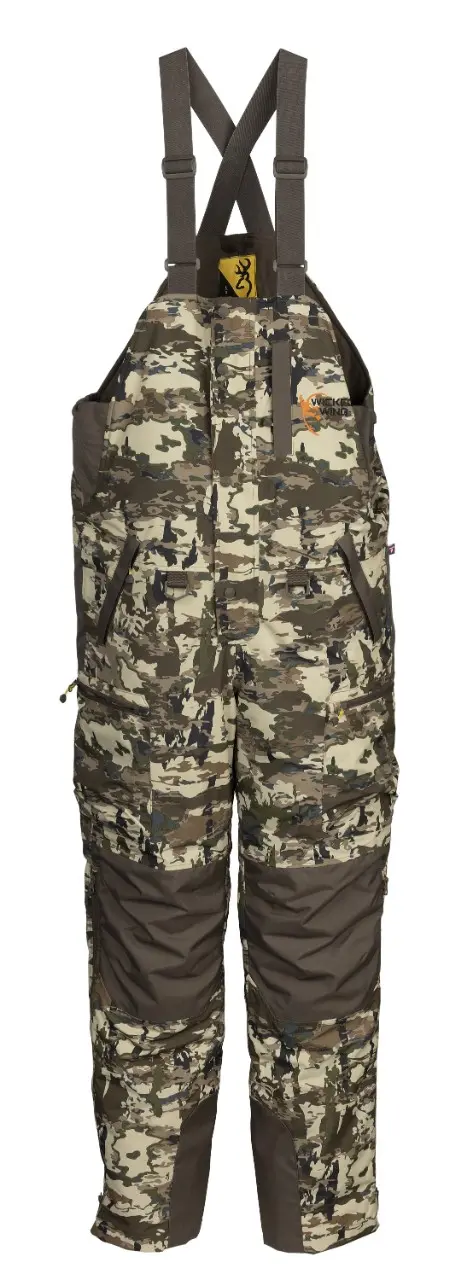Russell Knight, Tips for Longbeards, & Why You Need the Maxus II All-Purpose Hunter
Russell Knight, Tips for Longbeards, & Why You Need the Maxus II All-Purpose Hunter
Published on April 2nd, 2024 By: Jace Bauserman
Russell Knight seemed distracted. Our connection wasn’t the best, but his thoughts were scattered.
Then, in the background, I heard a voice.
“Russ, how much longer? We gotta go roost those birds.”
I didn't need an explanation. A certified turkey junkie myself, I immediately understood Russ's scatter-brained mindset.
“I’m so sorry, man,” Russ said. “I'm in Alabama for my second turkey hunt of the spring. Texas was outstanding last week, and my hair is on fire. I’m ready now, though; let’s talk turkey.”
Russell Knight cracked into the outdoor industry behind the lens of a camera filming outdoor legends David Hale and Harold Knight. Today, Russell and his good friend Seth Johnson are in front of the camera, capturing adventures around North America as they pursue their favorite game animal, the wild turkey, for Browning's Turkey Hunter TV.
“I got turned onto Browing shotguns years ago,” Knight said. “Honestly, I didn’t think Browning could improve on the original Maxus. That shotgun shouldered, pointed, and balanced like a dream. It threw an awesome pattern, never malfunctioned, and drastically reduced recoil.”
Knight’s feelings about Browning’s original Maxus matched my feelings about the manufacturer’s X-Bolt. Frankly, I often wondered how Browning could improve its X-Bolt rifle lineup.
Then, I spent the second half of my 2023 season behind the X-Bolt 2 Speed chambered in .300 PRC. Wow! I was wrong. Browning improved on perfection.
Knight felt the same when he switched to the Maxus II All-Purpose Hunter.
“I don't know how they did it, but they did,” said Knight. The SoftFlex cheek pad feels remarkable and ensures exact eye-to-red dot alignment. I also appreciate the rubber overmolding on the stock and forearm. The rubber overmolding helps with grip and overall functionality.”
Knight, who shot standard bead-style sights for years, eventually switched to a red dot sight to ensure maximum precision and appreciates that the shotgun has a drilled and tapped receiver.
“I attach a Picatinny-style scope base and add a red dot sight,” continued Knight. “Years ago, Harold Knight turned me onto a red dot, and I never looked back.”
Knight noted precision as the reason for his love affair with a modern-day red dot.
“When you have a shotgun that shoots as amazing as the Maxus II — that shoulders, points, and balances to perfection — you build tons of shooting confidence. Then, when you pair that shotgun with a tight-patterning turkey choke, TSS ammo — which I highly recommend because it holds its pattern exceptionally well and doesn’t deform on the shot — and add a red dot sight, you’re highly lethal.
“With a red dot, you can fine-tune and maximize your pattern to be dead center. You can drive tacks with a shotgun, and the pre-drilled receiver of the All-Purpose Hunter makes mounting a red dot ultra easy.”
Knight had switched gears from turkey scouting to talking about his favorite turkey shotgun, and he was now on a roll. He emphasized the recoil reduction via the Inflex II Recoil Pad and appreciated the oversized controls’ functionality and ease of operation.
“The trigger is excellent,” continued Knight. “Plus, this shotgun is as durable as they come. I love the Mossy Oak Bottomland finish, and I promise, you could use this thing as a boat paddle if you were in a bad way, dry it off, and smack a turkey with it.”
The Maxus 2 All-Purpose Hunter will handle shotshell sizes of 2-3/4, 3-, and 3-1/2-inch, and comes with an Extended X-Full Turkey choke tube plus three extended Invector-Plus choke tubes in Full, Modified, and Improved Cylinder.
Knight’s Early-Season Turkey Tips
Knight’s Early-Season Turkey Tips
Since Knight was fresh off an early-season Texas hunt and was getting ready to get after longbeards in Alabama, I decided to pick his turkey brain further.
Every turkey guru has their own set of tips and tactics they use throughout the year, and I asked Knight about his top three early-season turkey tactics.
“First, and this one is the most important,” you need to force yourself to stay an extra 20 minutes when you stop calling and think the bird is no longer coming. Sometimes, during the early season, birds pitch down and aren’t very vocal, but that doesn’t mean they aren’t coming. Get in a known turkey area — where you know the birds want to be and hang out there. Show patience in the early season, and you will kill many more birds.”
Knight’s approach to calling mirrors my own. However, as mentioned earlier in this article, most turkey fanatics have different theories about calling. You need to find the one that works best for you.
“I call a lot,” Knight said with a laugh. “I know I even frustrate guys I’m calling for sometimes, but they always seem to kill a bird. If you can call well, why not call? Whether hunting public or private land, birds haven’t been called too much during the early season. Don’t be afraid to use your calls, and if a tom gets vocal, give that bird all the hen music you want.”
Knight’s last big early-season tip is to minimize running and gunning.
“When there isn’t much foliage in the woods; turkeys will pick you off easily. It’s hard to get around. Turkeys can see you from a long way. Often, the birds are henned up, which means more eyes. You’ll do much more damage running and gunning during the early part of the season than you will filling tags.”
“My best early-season turkey advice is to do some scouting and find out where the birds want to be. Usually, toms will follow a group of hens around, and if you scout, you can discover a pattern. Get where the birds want to be, and you’ll surely notch more tags.”
There you have it: Reasons why you need the Maxus II All-Purpose Hunter and some tried-and-true tips to help you emerge from the turkey woods with a fan bobbing behind your head.




